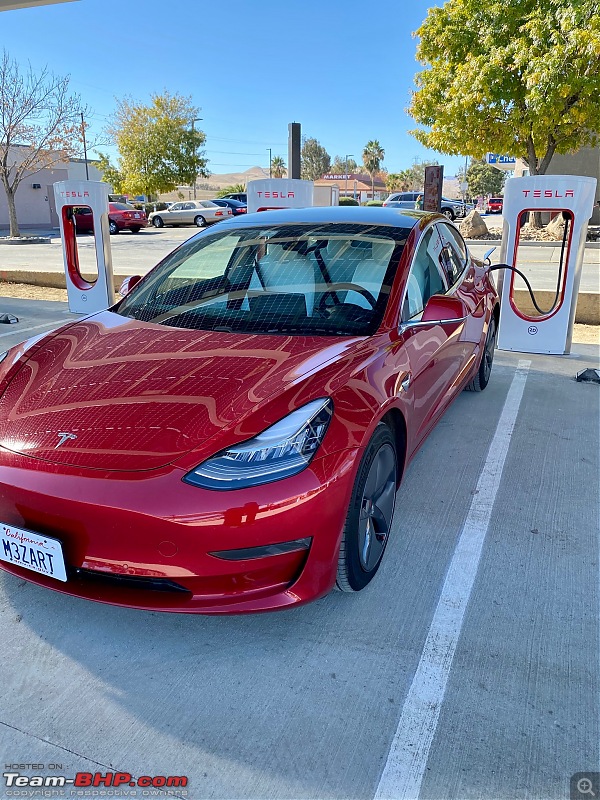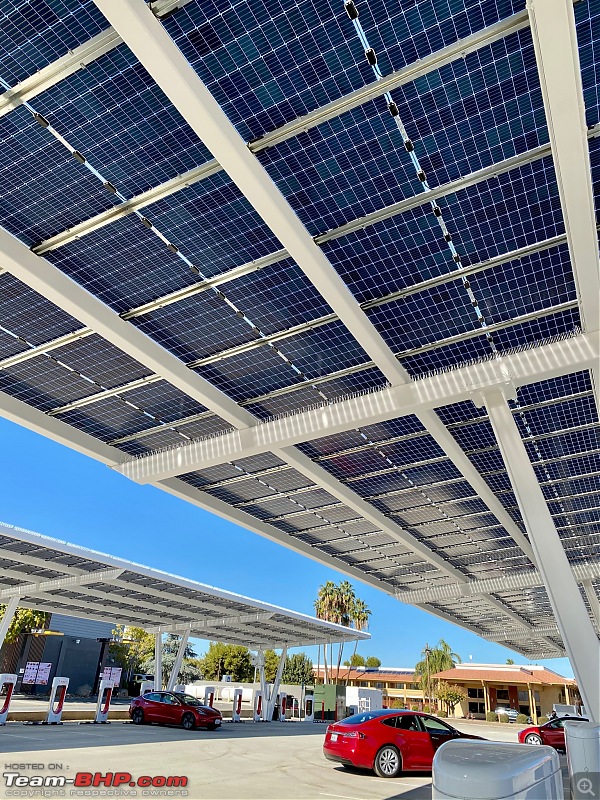Indeed, the west coast being inundated with Teslas has caused this kind of situation to unfold a few times recently. I recently drove from Michigan to South Carolina and back on Thanksgiving weekend, and on my return journey, I pulled into a Supercharger station in Wytheville, Virginia. Call it a coincidence or just bad timing, but within the next half hour, one by one, 8 more Teslas pulled in. I was lucky that there were 3 empty stalls when I got there (only two other cars), otherwise it would'be been up to a half-hour long wait. My charging was done in 35 minutes, so I left.

That said, I don't expect this to be an issue in the near- or long-term. In the near term, as long as electric cars are in the minority, the number of such incidences will be negligible (nobody is creating a thread about the other 999,999 times that supercharger station has been empty - it only got public attention because of the shock value). Considering the number of road trips majority of the public take each year (gotta be less than 10), with the rest 355 days of the year being spent ideally charging at home or at work, the current Supercharger network
OUTSIDE OF CALIFORNIA seems adequate for the number of cars on the road. Of course, Tesla should take some steps to address the shortage in their home state, especially in view of the impending flood of Model Y's that are going to hit the streets next year. The mobile Superchargers brought in by Tesla as an emergency measure was a good initiative, and you can bet they'll be prepared for this sort of thing next year during holiday time.
In the longer term, as soon as electric cars reach critical mass, third-party DC fast charging charging networks will spring up as independent businesses and manage it efficiently - its just a market demand vs supply equation at that point. Then one will have a choice of Tesla supercharger vs other CCS/Chademo fast chargers, although most likely Tesla Superchargers will be cheaper (current DC fast charging stations being rolled out by Electrify America in the US seem to have almost double or more the cost per kWh than what Tesla Superchargers cost).
In any case, for the US market at least (where most everyone has access to home or work charging), 95% charging needs of people will be taken care of outside of such DC fast charging networks. The slight inconvenience caused by having to wait is IMHO worth the advantages of EVs in general.
Quote:
Originally Posted by GTO  Until electric cars can be "topped up" as quickly as petrol / diesel cars, the best ways to charge them IMHO are:
- Overnight at your residential parking spot
- At your office
True. In a country like India though, such lines will be commonplace at all public charging outlets. |
Spot on.
Quote:
Originally Posted by GTO  I believe Tesla's network is still far wider (although Electrify America is catching up fast).
I read that Tesla came out with their own unique charger because, when they launched the Model S, the then-standard wouldn't support supercharging. So, in a sense, they had no option. Whatever the case, all EVs will have to move to a common charging port soon. |
Yeah there need to be other players in the standardized DC fast charger infrastructure space. (Well, firstly the EV industry should make up their mind about the charging plug types - there's still two competing standards in the US). Tesla alone cannot fulfill the demand they are going to create with the Model 3 and Model Y, not without significantly more capital expenditure which I think is going to be hard for at least another year for them.
Quote:
Originally Posted by GTO  Also, Tesla has adapters that allow its cars to be charged @ Electrify America outlets. |
That's right, but there's still some work to be done for being able to charge at Electrify America stalls.
Annoyingly, while they do have a European CCS adapter for sale for the European CCS charging port, and a
Chademo adapter for the US (which is insanely expensive @ $450 a piece), Tesla hasn't yet launched a US CCS adapter which can be used at EA charging stations in the US. This is particularly annoying because increasingly, CCS is shaping up to be the faster charging standard with up to 350 kW speeds, whereas the fastest Chademo stall I ahve seen is only 50 kW. Here's a screenshot of the different AC and DC fast charging plug types (you'll notice that the DC plugs in US and EU are just the AC overnight charging plugs with two additional pins).

Speaking of third party DC Fast charging infrastructure, here's the Electrify America charger that has come up at my nearest Walmart parking lot (EA has partnered with Walmart for the US). It has 4 stalls, with 1 of them being a 350 kW CCS stall, two of them being 150 kW CCS, and the last one having both a 150 kW CCS and a 50 kW Chademo (I believe you can either use the 150 kW CCS or the 50 kW Chademo - but not both at the same time. Same with the other stalls - although they have two plugs on each stall, only one can be used at a time, I read somewhere that this was done to support cars having charging ports on both sides). Also notice the data plate attached to the stall - up to 920 volts, 500 A - that's 460 kW designed capacity! (of course rated capacity needs to be lower but that's a good amount of future proofing I'd say).
Can't wait to be able to use these fast chargers, seeing as all my nearby Tesla Superchargers are the older V2 Superchargers having 150 kW capacity. (Newer V3 Superchargers are 250 kW, and the Model 3 can take in up to 250 kW). C'mon Tesla, out with the CCS adapter already!




 (24)
Thanks
(24)
Thanks
 (16)
Thanks
(16)
Thanks
 (2)
Thanks
(2)
Thanks

 (3)
Thanks
(3)
Thanks
 (2)
Thanks
(2)
Thanks
 (26)
Thanks
(26)
Thanks
 (9)
Thanks
(9)
Thanks
 (1)
Thanks
(1)
Thanks
 (8)
Thanks
(8)
Thanks
 (3)
Thanks
(3)
Thanks
 (1)
Thanks
(1)
Thanks
 (4)
Thanks
(4)
Thanks





















